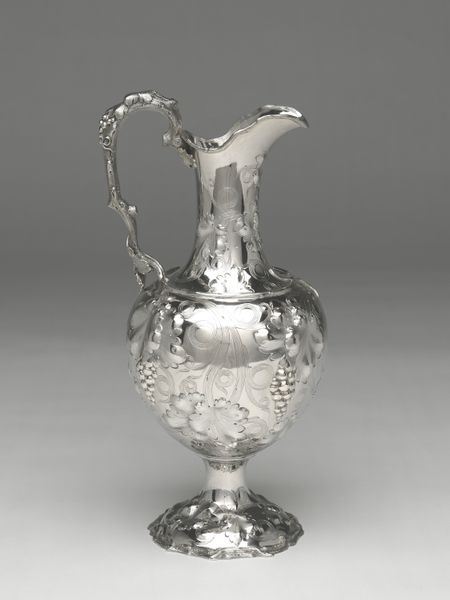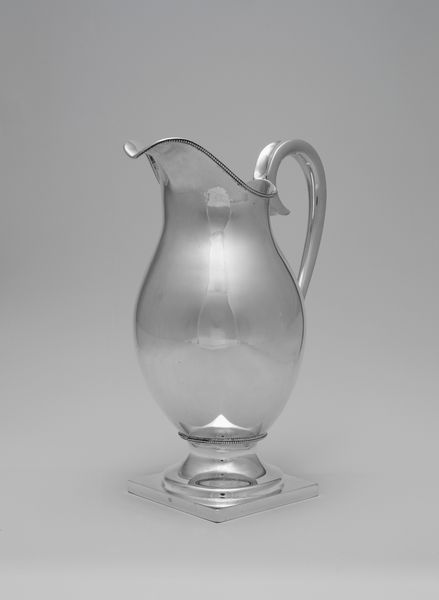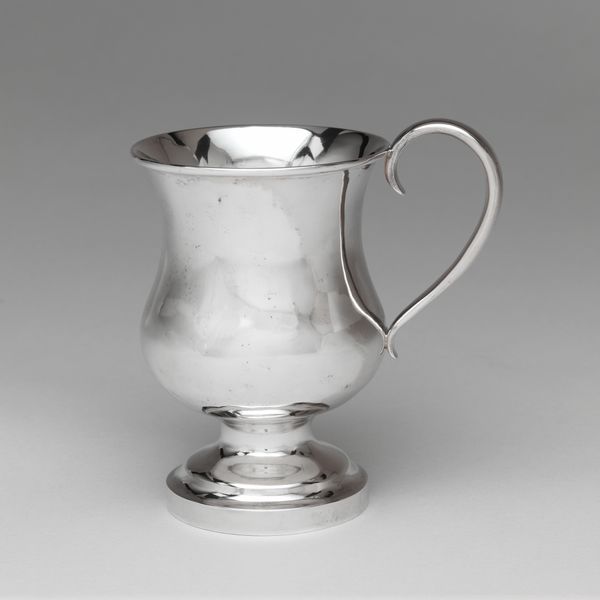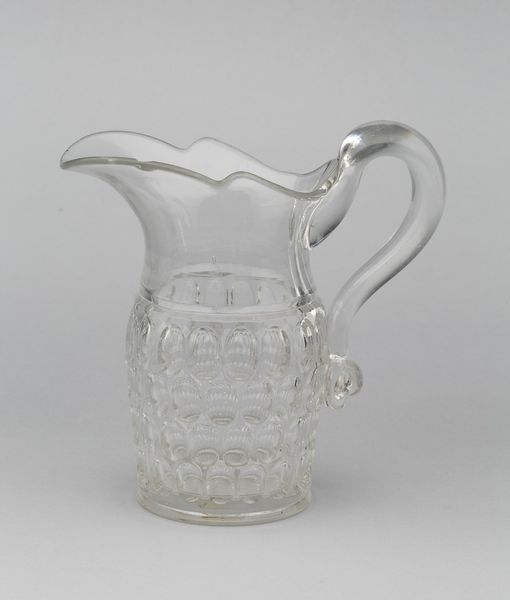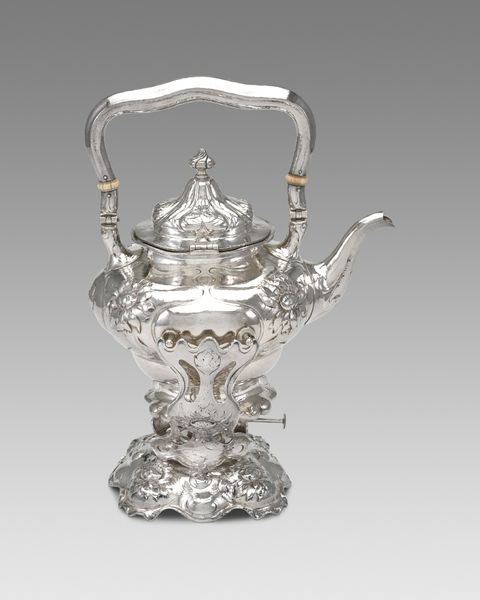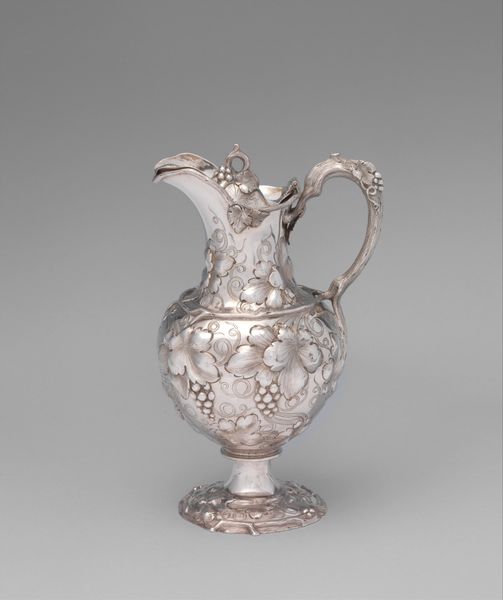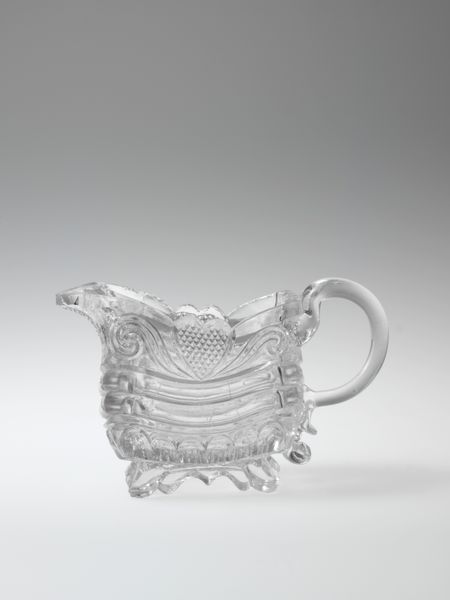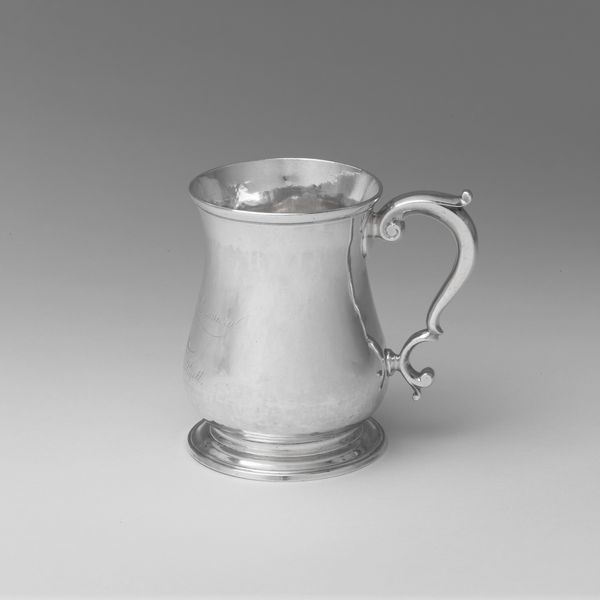
Water Pitcher (part of set with 1973.769a-g) 1900
0:00
0:00
silver, metal
#
silver
#
metal
#
vessel
#
decorative-art
Dimensions: 22.2 × 12.7 cm (8 3/4 × 5 in.)
Copyright: Public Domain
Editor: We’re looking at a silver water pitcher, part of a set made around 1900 by the Gorham Manufacturing Company. It’s quite ornate, and the floral motifs remind me of art nouveau. What can you tell us about it? Curator: Well, immediately the stylized naturalism speaks volumes. This isn't just a functional object; it’s a statement. Note the silver—not just the material’s inherent value, but its reflective quality. In the flickering candlelight of a dining room, what stories did these surfaces reflect? The very substance connects the earthly and the aspirational, no? Editor: So the imagery itself carries cultural meaning? Curator: Absolutely. Think about the specific flowers. Are they roses signifying love, or perhaps lilies indicating purity? These weren't random choices. Each element carefully considered, adding layers of symbolic meaning relevant to the owner and their social circles. The vessel form is archetypal, too: communal sharing. A host offering bounty. The handle, consider its curves, comfortable or cumbersome? What feelings might it evoke during use? Editor: That's fascinating. I hadn't considered the tactile element influencing perception so directly. I initially just saw pretty flowers. Curator: And there’s great value in that initial reaction! But dig deeper. These decorative objects tell us so much about a culture’s values, aspirations, and shared visual language. Editor: It makes you wonder about all the other messages hidden in plain sight in design objects we interact with daily. Curator: Indeed. From the mundane to the magnificent, objects are encoded with cultural information waiting to be deciphered. It broadens how we view functionality, no?
Comments
No comments
Be the first to comment and join the conversation on the ultimate creative platform.



